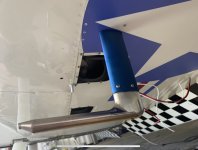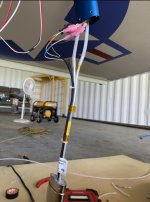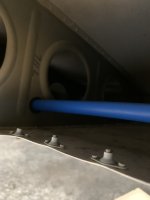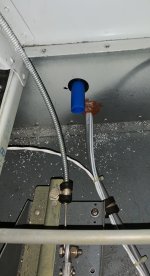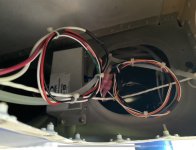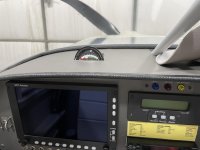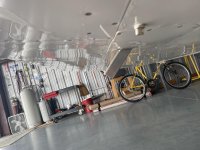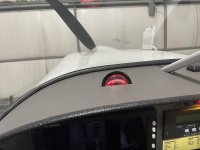Since Amir decided to go with a system using derived AOA, let’s take a short look at what that is…
It means AOA derived by an inertial measurement unit (IMU). If the IMU can compute pitch and flight path angle, the difference between the two is AOA (technically “body angle,” but close enough for what we are trying to accomplish). It’s easy to picture this in level flight as shown in this diagram:
Things get more complicated as the airplane maneuvers or encounters rough air, as Paul points out. The processing power required to compute a tight attitude solution and flight path goes up; and good code is required that can handle the matrix calculus and Kalman filtering required. With the right IMU, processor and software, an accurate all-attitude, high-G capable derived AOA is in the art of the doable.
We currently use derived AOA to calibrate the ONSPEED system. This is a more primitive use of the capability but illustrates how it works using the relationships shown in the picture above. Our current processor doesn’t have the muscle to run advanced derived AOA code and keep up with all of the other functions required for flight test…
A calibration run consists of a deceleration from Vmax (as fast as the airplane will go in level flight) to stall. The IMU computes pitch and flight path angle and compares that to the coefficient of pressure as the airplane slows down and AOA increases. “Coefficient of pressure” is just a fancy way of saying one pressure divided by the other one (or using a geometric function to compare the two). This captures AOA for the entire speed range of the airplane very accurately. When you plot this out, it looks like this:
What’s neat about the physics is that the relationship between AOA the coefficient of pressure is nearly linear as AOA increases. When we take those hundreds or thousands of data points (depending on the clock speed the system is running, this plot shows 50 data points per second), it’s easy for the computer to condense all those points into a simple equation that can then be used to compute AOA from pressure data.
Some folks have pointed out that AOA is non-linear as stall is approached. This is correct, but we can demonstrate that it doesn’t matter to the AOA system. Here is a simple, wing’s level pull from level flight to a stall about 40 degrees nose up. The plot shows pitch (blue line) and AOA (red line). Note that even though the pitch input is linear (constant over time) the AOA increases in the shape of a parabola (increasing over time). That should remind you of the shape of the left side of the flight envelope

.
If we compare IMU-derived AOA with coefficient of pressure for this more extreme example, the relationship is still linear:
In a perfect world, the AOA system would compare IMU derived AOA with pressure derived AOA and warn the pilot when the two disagree. We're working on that.
Cheers,
Vac







